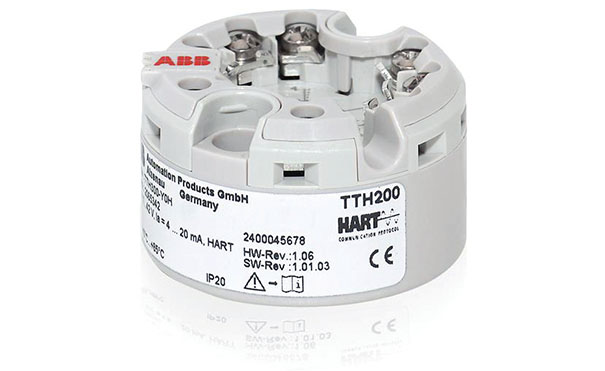A temperature transmitter is one of the electronic components in an industrial or laboratory thermal measurement array.
They act as the interfaces between a control system and a temperature sensor, converting analog thermal readings into scaled digital output signals with reduced background noise to enable accurate temperature monitoring with low degrees of interference. This complex system enables analysts to understand the thermal conditions of a process chamber or flow system as a value of degrees Celsius or degrees Fahrenheit in real-time.
Temperature transmitters can be manufactured as stand-alone devices that are attached to one or more temperature monitors in a process control system or integrated into a component’s connection head. The latter arrangement reduces the wiring requirements and the instrument footprint with an improved mechanical connection that is less susceptible to corrosion from process gases, vapors, or temperatures. Although the functionalities of a temperature transmitter are typically dictated by the application requirements.
Each of these component styles may be required to make signals available as an immediate digital reading and to transfer the data further down a measuring chain for additional processing. This article will explore the types, capacities, and applications of temperature transmitters in more detail:
Field-Mount & Head-Mount Temperature Transmitters
A field-mount temperature transmitter is an external component with an optional indicator and an encapsulating housing of die-cast aluminum or stainless steel. This protects the sensitive electronic components of the system from humidity, moisture, and other corrosive media.
Head-mounted temperature transmitters are integrated into the connection head of a temperature sensor with a direct connection to a thermowell via the extension tube and the process connection.
These are both connected with conventional Two-Wire technology, which uses the same wire connections for the power supply and signal outputs. With this technology, the temperature values are acquired by a measuring inset and converted into a thermal voltage, which is scaled into a load independent 4-20mA direct current (DC) signal. This signal can be immediately displayed on the digital indicator integrated into the transmitter’s housing, and transferred for further process control and analysis.
Temperature Transmitters from ABB
ABB has over 125 years’ experience in the field of temperature measurement for some of the most demanding industrial environments. Their range of temperature transmitters has been adapted for distinct application requirements, with field-mount and head-mount temperature transmitters suitable for difficult, often hazardous environments. This range includes:
- TTH200 head-mount temperature transmitter with a universal sensor input for RTD probes and thermocouples, and an accuracy of 0.1%. This integrated devices is tested to multiple compliances for explosion protection, corrosion monitoring, and extended diagnostics.
- TTF200 field-mount temperature transmitter with an optional LCD display and several configurable arrangements. It features the same outstanding accuracy of the TTH200 and is also tested to numerous specifications for industrial safety requirements.




